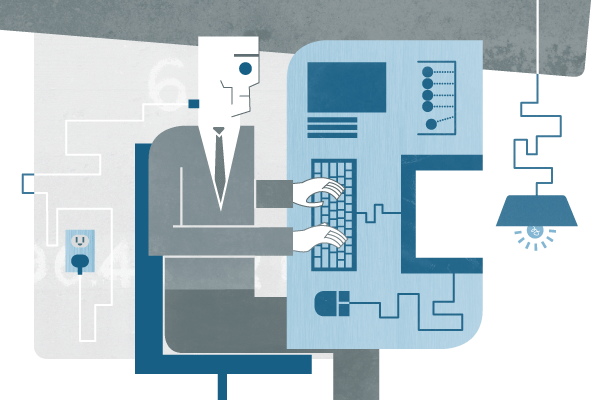Question: What’s the best way to make your writing easy to consume?
Answer: Just write how you’d speak. It sounds simple and obvious at first. But, au contraire, it’s easier said than done. All too often the dark side of convoluted speech draws us back; it’s tempting to revert back to the standards of what was “good” writing back in high school or college. You know, with words you’d never use every day (like “utilize”) and the corporate-y speak that uses four words instead of one (think: “at the current time” instead of “now”).
On Writing Well, by William Zinsser, is considered an authoritative source on writing matters, so I’ll borrow his credibility in this post with a couple of excerpts.
“Clutter is the disease of American writing. We are a society strangling in unnecessary words, circular constructions, pompous frills, and meaningless jargon” (6).
With conversational copy, you pull people in. It’s natural. It’s what they do every day: talk. When you use those stilted marketing words, people immediately put up their guards because they feel like they’re receiving a sales pitch––not information (which could be an entire article on semantics and psychology).
Don’t Give in to the Drones
This excerpt is golden. I want to etch it into a sign and hang it on our office wall:
“Still, plain talk will not be easily achieved in corporate America. Too much vanity is on the line. Managers at every level are prisoners of the notion that a simple style reflects a simple mind. Actually a simple style is the result of hard work and hard thinking; a muddled style reflects a muddled thinker or a person too arrogant, or too dumb, or too lazy to organize his thoughts. Remember that what you write is often the only chance you’ll get to present yourself to someone whose business or money or goodwill you need. If what you write is ornate, or pompous, or fuzzy, that’s how you’ll be perceived. The reader has no other choice” (175).
It comes down to this: Clear, concise, well-thought-out, and carefully written copy makes your writing easier to read, remember, and react upon.
This definitely still applies for those 404 pages, FAQs, error messages, or confirmation emails. In fact, it applies more so. These are times when people need the message fast or times when they are frustrated and just want straight, plain English.
Specific Techniques for Your Writing:
standard word order
When you use nonstandard word order you may sound like a poet or Yoda, but you certainly don’t sound conversational. Standard word order is subject-verb-object. For more information, read Grammar Girl’s explanation.
break it up
Don’t let your paragraphs turn into essays. Try to keep most paragraphs under five sentences and maybe use some headlines here and there. Headlines can take on the same feel as a pleasant lull in conversation before ramping up to a new topic.
read it back
After you’ve completed your final edits, read it aloud to yourself––slowly, in an attempt to read what is actually there as opposed to what you thought you wrote. Another option is to use the text-to-speech feature on your computer.
In conclusion, don’t forget that even though the medium is the Web, the message will be read by a human with a pulse and a brain. So next time you’re writing, make sure you reach for language with warmth and humanity and avoid mechanical writing. Robots are cool, but no one wants to write like one.

